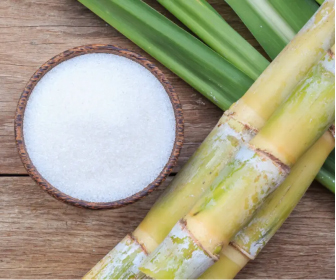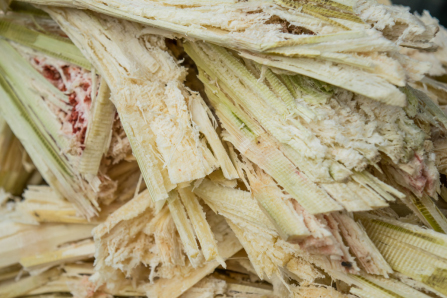Sugar cane is one of the main raw materials for sugar production, and bagasse is the main by-product of the sugar industry, which is the fibrous residue of sugar cane stems after crushing and extracting cane juice, and its composition is similar to that of woody materials. Bagasse is a mixture of coarse and hard residue, accounting for about 24% to 27% of the sugarcane (which contains about 50% moisture), and for every ton of sugar produced, 2 to 3 tons of bagasse will be produced. The main components of bagasse are cellulose and hemicellulose, with less lignin, so bagasse has great superiority as fiber raw material.
In the 1970s, the bagasse of China's sugar mills was mainly for the sugar mills themselves as fuel to be burned or discarded. With the progress of science and technology, as well as the continuous development of biomass conversion and utilization engineering technology, it has been found that bagasse is not only a treasure trove of natural polymer materials and green chemicals, but it also contains rich biomass energy. Moreover, bagasse as a biomass raw material has obvious advantages: the source of bagasse is concentrated, the production is large, the collection is simple, the transportation radius is small, and the composition of sugarcane is relatively stable, the nature of the homogeneity of the sugarcane, the use of it in the production of high-value-added products, to meet the raw material required for industrialization of the concentration of the continuity and homogeneity of the requirements, so bagasse is a high-quality raw material for biorefinery. Below, let's take a look at what utilization value of bagasse resources!
Feed
Over the years, many scholars at home and abroad have devoted themselves to the development and research of sugar mill by-products as feed, and have made certain achievements. For example, a U.S. Institute of Animal Husbandry invented a method of processing sugarcane bagasse into high-protein feed after ammonia treatment. Specific practice is: bagasse and urea or amine (100: 2 of the aqueous solution) mixed, bagasse to be all wet, in the heating pot to 14kg pressure steaming for 2 hours, out of the pot after the cooling to 25 ℃ or so when mixed into the yeast fermentation, fermentation will be the gas produced by the discharge of clean, and bagasse drying, grinding into a fine powder can be used as feed.
At present, there are mature technologies to use bagasse as a substitute raw material for wood to produce paper cups, fully degradable paper agricultural landfilm, paper food and beverage utensils. One of the fully degradable paper agricultural film is the use of 100% bagasse pulp, can be recycled for papermaking, but also natural degradation, can solve the problem of white pollution caused by the use of polystyrene food and beverage equipment over the years, is considered to be the most promising new results; made of bagasse food and beverage with high whiteness and tightness, good temperature and oil resistance, non-toxic, tasteless, can be completely degraded in three months, the production process is not a three-waste! Pollution, and production costs are much lower than pulp molded fast food boxes.
We can offer sugarcane bagasse paper roll, if you interested, welcome to contact us.
At a time when fossil fuel resources are in short supply and prices are soaring, the use of bagasse as a fuel can be said to have played its role, and bagasse has been used to make paper for decades. We believe that, with the development of sugar cane industry and the continuous research on bagasse and its utilization, bagasse will have a wider future of utilization to give play to its greater economic benefits.
Post time: Apr-09-2024



